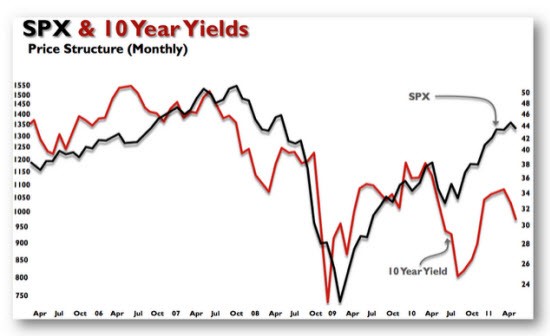Dow Jones Industrial Average SPDR S&P 500 ETF Trust Investors Are Mistakenly Assured By Two Shaky
Post on: 16 Март, 2015 No Comment

Have you ever wondered how billionaires continue to get RICHER, while the rest of the world is struggling?
I study billionaires for a living. To be more specific, I study how these investors generate such huge and consistent profits in the stock markets — year-in and year-out.
CLICK HERE to get your Free E-Book, “The Little Black Book Of Billionaires Secrets”
It is true that the Fed has been in control for six years. Therefore, the rationale regarding the slowing economy is that prior economic growth was a positive for obvious reasons, but the evidence that the economy is now slowing is also a positive. It ensures that the Fed will probably not move any time soon to begin raising interest rates. Heck, if the economy slows too much the Fed can even backtrack and provide another round of QE stimulus.
That may be. However, smarter people than me, some with access to the thinking of the Fed, including Fed members themselves, are not so sure of that. They believe the Fed needs to continue on its course toward normalization, begun last year with the removal of QE stimulus. It may risk taking a small recession now, rather than guaranteeing a bigger meltdown later if it continues to blow stock and debt bubbles.
What we can know is that faith in the Fed at this point is not as wise as many think.
Alan Greenspan was thought to have the market’s back in the late 1990’s, the so-called ‘Greenspan Put’. But the severe 2000-2002 bear market and 2001 recession took place anyway. Ben Bernanke supposedly had the market’s back in 2006 and 2007, the ‘Bernanke Put’, but the housing bubble burst and the even worse 2007-2009 bear market and recession took place anyway.
Yet the same easy money policies that resulted in those severe bear markets once the market became overvalued, now constitute the ‘Yellen Put’ that assures us that all will be well in spite of the current over-valuation. Do we ever learn?
The other generalization is the broad acceptance that there is nothing to worry about for 2015 since it is the third year of the Four-Year Presidential Cycle, and the third year is always positive.
That is also a misconception of history.
It is true that the history of the four-year presidential cycle is that the market tends to experience most of its serious corrections and bear markets in the first two years of the four-year cycle, while the third and fourth years are almost always positive.
The driving force behind the pattern is the desire for an incumbent president to be re-elected. History clearly shows that presidential administrations, regardless of party, allow or sometimes even create, economic and market problems in the first or second year of their terms to get them out of the way. That leaves them time in the third and fourth year of their term to do whatever it takes in the way of government spending and other efforts, to make sure the economy and stock market are recovered and strong by the time the next election rolls around.
However, that pattern is clear only when a presidential administration is serving its first term and can be re-elected. It is not at all consistent when a re-elected administration is serving its second term and cannot be re-elected.
For example, while the normal pattern took place in the first terms of the last three re-elected presidents, Reagan, Clinton, and Bush Jr. it did not show up in their second terms when they could not be re-elected again.
There was no serious market correction in the first two years of their second terms, raising the risk it would take place later, in the third or fourth year. Sure enough, the market topped out in August of the third-year of President Reagan’s second term, culminating with the 1987 crash in October, at the end of which the Dow was down 36%. The severe 2000-2002 bear market began in 2000, the fourth year of President Clinton’s second term. The 2007-2009 bear market began in 2007, the third year of President Bush Jr’s second term.














